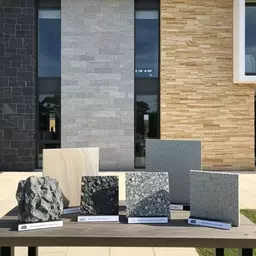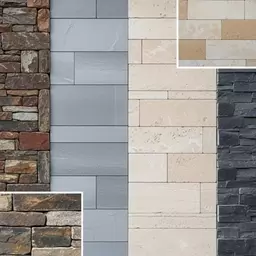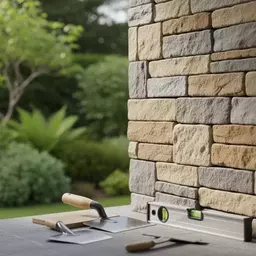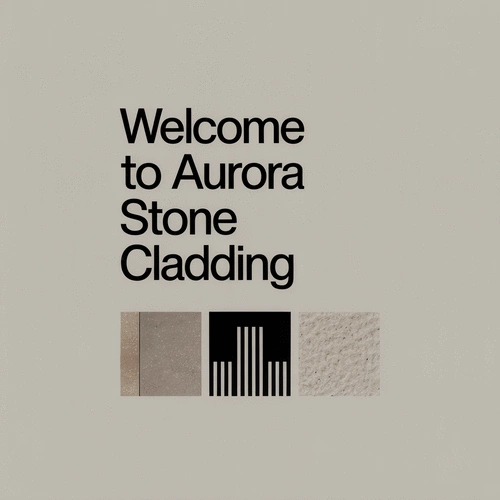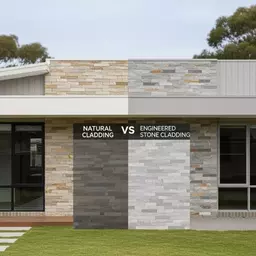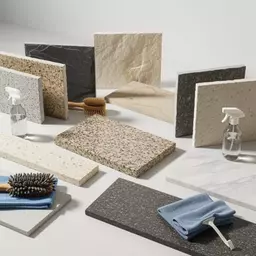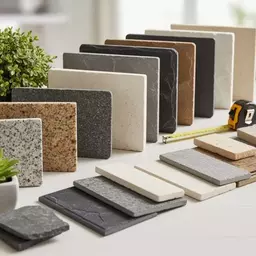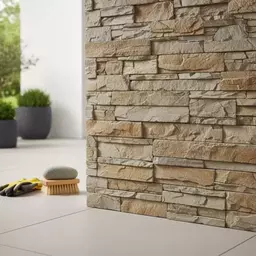When it comes to sustainable building practices, the choices we make can profoundly affect the environment. Have you ever considered how the materials used in your home can contribute to a greener planet? Let's explore the invaluable benefits of energy-efficient stone cladding and how it can enhance both aesthetics and sustainability.
What You Will Learn
- Energy-efficient stone cladding enhances aesthetic value while improving durability.
- Opting for these materials can significantly lower energy bills and carbon emissions.
- Stone cladding supports sustainable architecture by reducing reliance on heating and cooling systems.
- Understanding LEED certification can guide eco-friendly decisions in your building projects.
- Choosing the right stone involves considering climate, insulation properties, and maintenance requirements.
- Selecting sustainable materials promotes responsible sourcing and enhances biodiversity.
The Dual Benefits of Energy-Efficient Stone Cladding
Energy-efficient stone cladding is a dual-purpose solution that improves aesthetics while significantly reducing a building's carbon footprint. The visual below highlights key aspects and benefits.
Energy-Efficient Stone Cladding
A protective layer of stone applied to the exterior of a building, designed to enhance both aesthetics and thermal performance.
Key Benefits & Impact
- Improved Thermal Insulation: Reduces energy needed for heating/cooling.
- Reduced Energy Bills: Direct financial savings for homeowners.
- Lower Carbon Footprint: Minimizes greenhouse gas emissions.
- Increased Property Value: Enhances market appeal due to efficiency and aesthetics.
How it works
Reducing Carbon Footprint
- Better Insulation: Stone acts as a natural barrier, stabilizing indoor temperatures.
- Reduced Energy Consumption: Less reliance on HVAC systems.
- Increased Thermal Mass: Helps regulate temperature changes naturally.
- Sustainable Sourcing: Minimizes environmental impact of material extraction.
Choosing the Right Cladding
- Climate Suitability: Matches local weather conditions.
- Insulation Properties: High thermal performance.
- Maintenance: Consider upkeep commitment.
- Aesthetic Appeal: Complements home design.
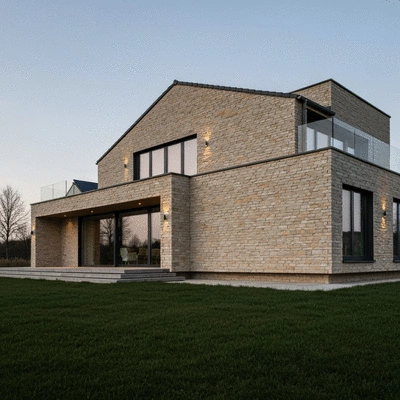
Understanding Energy-Efficient Stone Cladding and Its Impact on Carbon Footprint
When we talk about stone cladding, we're diving into a world of aesthetics and functionality. At Aurora Stone Cladding, we believe that choosing the right materials can make a significant difference—not just in style but in sustainability, too! Energy-efficient stone cladding serves as a dual-purpose solution: it beautifies structures while also reducing their carbon footprint.
So why focus on energy efficiency? Well, as homeowners, builders, and architects, we have a responsibility to consider our planet. By opting for energy-efficient materials, we can significantly lower energy consumption, making a big impact on our environment.
What is Stone Cladding and Why Choose Energy Efficiency?
Stone cladding is essentially a protective layer of stone applied to the exterior of a building. It creates a stunning visual effect while enhancing durability. But when paired with energy-efficient features, it goes beyond mere looks. Think about it—by investing in energy-efficient stone cladding, you’re not just upgrading your property; you’re actively contributing to a more sustainable future! For a deeper dive into material choices, explore the differences between stone cladding vs. engineered veneers.
- Enhances aesthetic value
- Improves thermal insulation
- Reduces energy bills
- Increases property value
These benefits make energy efficiency a compelling choice for anyone considering stone cladding. The dual advantage of beauty and sustainability is hard to ignore!
The Role of Stone Cladding in Sustainable Architecture
In today’s world, sustainable architecture is more than a trend; it's a necessity. Stone cladding plays an essential role in this movement by providing a natural barrier against external temperatures. This means less reliance on heating and cooling systems, leading to lower energy use.
At Aurora Stone Cladding, I am passionate about helping our clients understand how stone can support sustainable design. Imagine a building that not only stands the test of time but also complements the environment! Strongly considering energy efficiency in your design choices can lead to a significant positive impact.
How Energy-Efficient Materials Reduce Carbon Footprint
Using energy-efficient materials in stone cladding can drastically cut down on carbon emissions. Through better insulation, these materials help maintain a stable indoor temperature, which minimizes the energy needed for heating and cooling. It’s like giving your building a cozy blanket that keeps it warm in winter and cool in summer!
- Reduced energy consumption leads to lower greenhouse gas emissions.
- Increased thermal mass helps regulate temperature changes.
- Sustainable sourcing of stone minimizes environmental impact.
By choosing these materials, you’re not just making a design choice; you're making a statement about your values and commitment to the environment. Let's take the next steps to ensure your project reflects that vision!
We Want to Hear From You!
As you consider your options for energy-efficient stone cladding, what features are most important to you? Are you prioritizing aesthetics, insulation properties, or sustainability? Share your thoughts below:
Summarizing the Benefits of Energy-Efficient Stone Cladding
When it comes to enhancing your home’s facade, energy-efficient stone cladding stands out as a top choice. Not only does it provide aesthetic appeal, but it also plays a significant role in reducing energy consumption. As we’ve discussed, choosing the right materials can lead to substantial savings on energy bills while positively impacting our environment. Let's delve into how to select the best options for your unique needs!

How to Choose the Right Stone Cladding for Your Home
Selecting the perfect stone cladding isn’t just about looks; it involves understanding your home's architecture and climate as well. Here are some key factors to consider:
- Climate Suitability: Choose materials that are ideal for your local weather conditions.
- Insulation Properties: Look for options that offer excellent thermal performance to maintain indoor comfort.
- Maintenance Requirements: Consider how much upkeep you're willing to commit to for your chosen stone.
- Aesthetic Appeal: Ensure the stone complements your home’s overall design and enhances its beauty.
At Aurora Stone Cladding, I often guide homeowners through these considerations, ensuring that they select a product that reflects their style while maximizing energy efficiency! For tips on caring for your chosen material, check out our guide on natural stone cladding care.
Environmental Impact: Contributing to a Sustainable Future
Choosing energy-efficient stone cladding not only beautifies your home but also contributes to a greener planet. By opting for sustainable materials, you actively participate in reducing greenhouse gas emissions and promoting responsible sourcing. Here are some ways your choice can make a difference:
- Minimizing energy consumption during both installation and throughout the life of the building.
- Supporting local stone industries, which often practice more sustainable harvesting and manufacturing.
- Enhancing biodiversity by using materials that blend seamlessly with natural surroundings.
Through thoughtful choices, we can all play a role in fostering a sustainable future. Isn't it exciting to think that your home can be part of the solution?
LEED Certification and Its Importance in Stone Cladding Projects
LEED (Leadership in Energy and Environmental Design) certification is an essential benchmark for sustainability in building projects. When considering stone cladding, understanding LEED can guide you toward making eco-friendly decisions. Here’s why it matters:
- Recognition: LEED certification showcases your commitment to sustainability, which can enhance your property value.
- Guidelines: It provides clear standards for energy efficiency, helping you make informed choices.
- Long-Term Savings: LEED-certified buildings often see reduced operational costs due to energy-efficient designs.
At Aurora Stone Cladding, I recommend exploring LEED options to not only elevate your project’s sustainability but also to inspire others in your community!
Taking Action: Next Steps for Homeowners
Now that we've explored the benefits of energy-efficient stone cladding, it's time to consider your next steps. Making informed decisions can ensure your project is both beautiful and sustainable!
Consulting with Professionals: Planning Your Cladding Project
Before diving into your project, consulting with professionals can make a world of difference. Here’s how you can prepare:
- Identify Experts: Look for consultants who specialize in stone cladding and energy efficiency.
- Set Clear Goals: Discuss your aesthetic preferences, budget, and sustainability goals with your team.
- Request Samples: Hands-on experience with materials will help you make the best choice for your home.
Remember, good planning today leads to a stunning and efficient home tomorrow!
Resources for Further Learning on Energy-Efficient Building Practices
Staying informed is key to making the best choices in stone cladding. Here are some valuable resources:
- Online webinars and workshops focused on sustainable architecture.
- Books and articles on energy-efficient building materials.
- Local building and design expos where you can meet suppliers and see materials in person.
At Aurora Stone Cladding, I believe in the power of education to empower homeowners. The more you know, the better your decisions will be!
Exploring Passive Solar Design in Your Cladding Choices
Lastly, incorporating passive solar design principles into your stone cladding choices can substantially improve energy efficiency. Here are a few tips:
- Orientation: Position your stone cladding to maximize sunlight exposure in winter and shade in summer.
- Color Selection: Lighter stones can reflect sunlight, keeping your home cooler, while darker stones can absorb heat.
- Thermal Mass: Utilize stone's natural thermal properties to help regulate indoor temperatures.
By embracing these principles, your home can become a model of energy efficiency and comfort! For more design ideas, explore various stone cladding ideas for Australia.
Recap of Key Points
Here is a quick recap of the important points discussed in the article:
- Energy-efficient stone cladding enhances aesthetic value while improving thermal insulation.
- Choosing the right stone cladding contributes to lower energy bills and increased property value.
- Sustainable architecture is essential; stone cladding can significantly reduce energy consumption and carbon emissions.
- Consider climate suitability, insulation properties, maintenance requirements, and aesthetic appeal when selecting stone cladding.
- LEED certification can enhance property value and promote eco-friendly building practices.
- Incorporating passive solar design principles can further improve energy efficiency in your home.
Frequently Asked Questions
What is energy-efficient stone cladding?
Energy-efficient stone cladding is a protective layer of stone applied to a building's exterior that enhances both its aesthetic appeal and thermal performance, ultimately reducing energy consumption for heating and cooling.
How does stone cladding reduce a building's carbon footprint?
It reduces the carbon footprint by providing better insulation, which minimizes the energy needed for HVAC systems. This leads to lower energy consumption, reduced greenhouse gas emissions, and increased thermal mass to regulate indoor temperatures naturally.
What are the key benefits of using energy-efficient stone cladding?
Key benefits include improved thermal insulation, reduced energy bills, a lower carbon footprint, enhanced aesthetic value, and increased property value.
What factors should I consider when choosing stone cladding for my home?
Consider climate suitability, insulation properties, maintenance requirements, and aesthetic appeal to ensure the cladding performs well and complements your home's design.
What is LEED certification and why is it important for stone cladding projects?
LEED (Leadership in Energy and Environmental Design) certification is a benchmark for sustainable building. It's important because it showcases commitment to sustainability, provides clear standards for energy efficiency, and can lead to long-term operational cost savings and increased property value.


